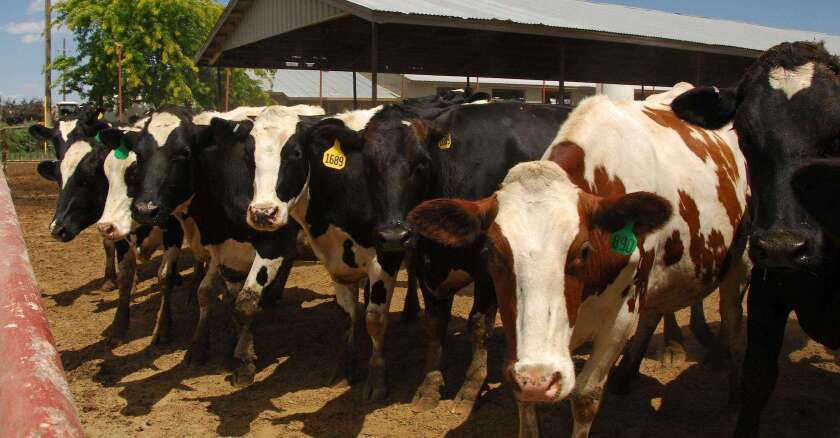Tuberculosis (TB) offers a textbook example. We’ve been passing this deadly infection from person to person for 9,000 years. And TB rates are rising again, up nearly 4 percent from 2020 to 2022 after two decades of annual declines. In 2022, TB sickened 10.6 million people worldwide and killed 1.3 million adults and children. Last year, U.S. cities large and small — including Boston, Chicago, Omaha, New York and San Diego — saw outbreaks in schools, day-care centers, chicken-processing plants, homeless shelters and casinos.
TB is the world’s deadliest infectious disease, having reclaimed the title from COVID-19. And those who survive its ravages often suffer long-term lung damage.
Public health organizations and medical science have blunted TB’s toll. We have the tools, medications and know-how to all but eradicate it. Modern blood tests can accurately diagnose the disease in its latent, sleeping phase so people can be treated affordably with newer, shorter and less toxic drug regimens before they become dangerously ill and contagious. Even growing multidrug-resistant strains of TB — which have sparse, exorbitantly expensive treatment options with debilitating side effects — can be identified and surveilled by new technologies such as next-generation sequencing.
So if we have these important solutions, why are we failing to meet global targets to end TB?
Faulty understanding and lagging funds are the main reasons. Misconceptions are TB’s greatest ally: Many believe TB is a disease of the past, that it is not dangerous or that it exists only in remote parts of the world many couldn’t find on a map.
It is true that distribution of the disease is highest in poorer regions of the world. But if COVID-19 proved anything, it is that infectious diseases are inevitably mobile in the constant global swirl of migrants, business and professional travelers, leisure seekers and adventurers.
TB anywhere is TB everywhere. In both industrialized nations and low- and middle-income countries, it strikes people living in poverty, the homeless, the incarcerated or those working or living in close or communal settings. It preys on those with weak immune systems.
About one-third of the world’s population, including 13 million in the U.S., live symptom-free and are noncontagious with latent TB. But 1 in 10 will eventually convert to active TB disease, which they can spread to 10 to 15 more people just by breathing. We must find and treat that reservoir of future TB disease cases now — affordably, responsibly and effectively — before these latent infections activate and spread.
Public health professionals expected — and experienced — an uptick in TB cases, in part because resources were diverted to fight the COVID-19 pandemic, which hindered efforts to diagnose and treat TB cases effectively, particularly in high-burden nations.
Quite simply, funding has stagnated. The Stop TB Partnership said it would cost an average of $30 billion a year to end TB worldwide by 2030. Yet the funding available in 2021 was only $5.4 billion. Member states at the 2018 U.N. high-level meeting on TB committed to begin to close the gap with $13 billion annually by 2022 but failed to meet even half that amount.

We must improve coordination at the international, national and regional levels and ramp up investments in aggressive contact tracing, testing and treatment. With intentional coordination and funding, resources can be channeled quickly to where they are needed when an outbreak is detected and to high-risk populations everywhere. Until an effective vaccine is developed and broadly deployed, only these actions can break the chain of transmission, save lives and reduce the societal and economic burdens of TB.
These burdens are highly consequential, not only in terms of human life but also economic vitality. The global economic burden of TB could amount to approximately $1 trillion by 2030 in terms of GDP loss, considering both direct and indirect costs.
The direct cost of TB treatment varies dramatically based on the location of care and whether the TB is drug resistant, ranging from a few hundred dollars in low- and middle-income countries to thousands in high-income countries. San Diego, for example, estimates that diagnosing and treating one person with drug-susceptible, active TB disease is $43,900, compared with $857 to prevent TB. For the growing menace of multidrug-resistant TB, direct costs exceed $150,000 per case in high-income countries such as the United States.
Indirect costs generally involve three to four months of lost work time for the typical TB patient, along with a 20 to 30 percent drop in yearly household earnings. These numbers amplify in countries with a higher TB burden. TB can reduce a country's GDP by 0.6 percent to 2.0 percent, depending on the prevalence of the disease and the country’s economic structure. Yet economic models suggest that for every $1 invested in ending TB, $40 is saved.
As a future pandemic contender, TB is a growing threat to global health security, economic vitality and unprepared health-care systems.
We have no excuse not to succeed in ending TB. We must act now and invest now. All humans are stakeholders, and the public, philanthropic and private sectors have a vital role to play in winning this fight.
Thierry Bernard is the chief executive officer of QIAGEN, a global biotechnology company focused on advancing solutions in molecular diagnostics and life sciences. He also serves as chairman of the board of AdvaMedDx, a division of the Advanced Medical Technology Association.
Governing’s opinion columns reflect the views of their authors and not necessarily those of Governing’s editors or management.
Related Articles













